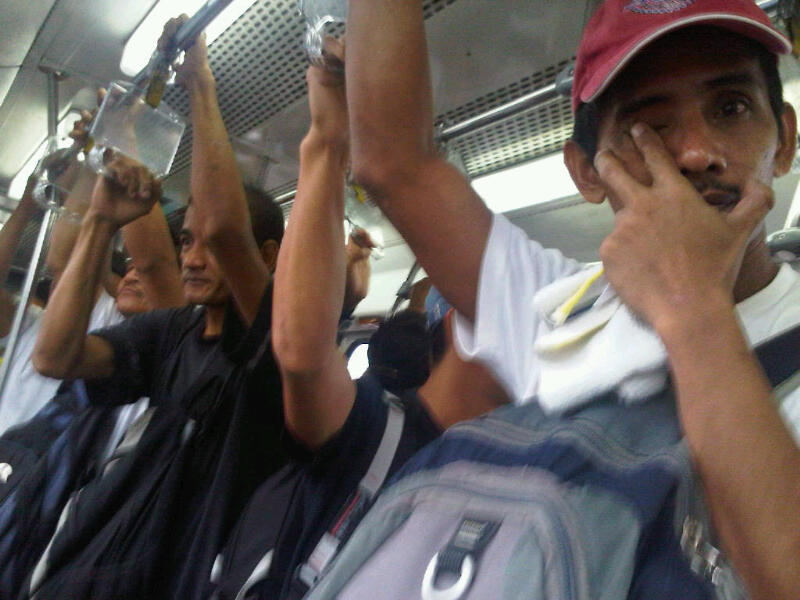Signaling system ‘obsolete’: Sumitomo urges gov’t to halt MRT operations

Apart from problems with the signaling system, Sumitomo says passenger overloading and the shortage of spare parts for the existing fare collection system are the main concerns for the MRT.
MANILA, Philippines—The Metro Rail Transit (MRT) line’s previous maintenance contractor has urged the government to consider halting the train line’s operations until the existing signaling system for trains is replaced.
Earlier this month, Japanese industrial giant Sumitomo Corp. told MRT General Manager Al Vitangcol III that thousands of passengers face potentially serious injury or even death as long as the trains run using the “obsolete” signaling system.
“Essential spare parts are obsolete for the MAN900 signaling system, and again, it is regretful that no countermeasures have been implemented until today,” Sumitomo said in an October 1 letter to MRT’s management.
The MRT’s signaling system is responsible for managing traffic on the train system’s north and southbound tracks.
The signaling system ensures that trains are evenly spaced and that collisions do not occur.
Sumitomo, through subcontractor TES Philippines, was responsible for the upkeep of the train line for 10 years.
In its letter to the MRT management, a copy of which was obtained by the Inquirer, Sumitomo said no company has the ability to maintain an old signaling system with no available spare parts.
Salient points of Sumitomo’s letter were revealed last week by Pangilinan-led MRT Corp. (MRTC) in a separate open letter.
“No maintenance providers are able to manage such technical risk under existing conditions of the (signaling system) and this is why we have been emphasizing the need for countermeasures,” the original letter read.
Sumitomo pushed for the immediate upgrading of the MAN900.
“As the situation is critical, this signal issue might result in serious operational accidents accompanying injuries, so upgrading of MAN900 should be executed immediately,” the company said.
Apart from problems with the signaling system, Sumitomo said passenger overloading and the shortage of spare parts for the existing fare collection system were the main concerns for the MRT.
Over 540,000 people use the MRT, which runs through Epifanio de los Santos Avenue (Edsa) from Taft Avenue, Pasay to North Avenue, Quezon City, during weekdays.
This is significantly higher than the designed capacity of just 350,000 passengers daily.
To prevent breakdowns that are usually caused by the weight of trains filled with passengers to the brim, Sumitomo suggested the replacement of electric motors on train cars with newer equipment that are less prone to failure.
“We cannot deny the possibility of disastrous accidents happening in the operation of MRT,” Sumitomo said. “Considering the lead time needed to complete these countermeasures, no more delay in starting actions should be allowed.”
Last week, PH Trams-CB&T JV, the same company that maintains the older Light Rail Transit (LRT) line 1, was appointed to replace Sumitomo, whose contract with the government expired Friday.
PH Trams, however, was just chosen for an interim period of six months, time to be used by the government or the MRT’s concession holder MRTC to find a new company to handle maintenance for the long term.
